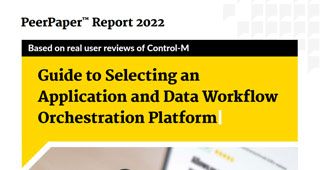Whenever someone joins a new company or establishes a partnership with an organization, one of the first questions is usually “How do you do things around here?” Depending on the maturity of the company, that answer might be found by speaking to the founder/owner/expert or documented in a very elaborate HR manual or a digital repository with instructions from how to order staplers, apply for leave, or purchase equipment.
That “how to” is the process framework in place that defines the business activities, and includes inputs, outputs, sequences, and dependencies. Well-defined processes can improve productivity within and across organizations and functions. The more mature an organization, the better the management of the business processes in terms of definition, establishment, monitoring, control, and improvement.
The management of processes is a key success factor in executing business strategy, and therefore organizations are paying close attention to this important practice. This article aims to clarify the similarities and differences within three major practices of managing business processes, BPM, Workflow Management and Case Management, by shedding light on what they are and how they apply to the management of business processes.
Business Process Management (BPM)
Nathaniel Palmer of BPM.com defines BPM as “a discipline involving any combination of modeling, automation, execution, control, measurement and optimization of business activity flows, in support of enterprise goals, spanning systems, employees, customers and partners within and beyond the enterprise boundaries.” In that broad definition is the general understanding that BPM focuses on an individual business process (and its sub processes) rather than a group of diverse processes. BPM is a more standard approach that doesn’t focus much on processes with complexity or uncertainty.
BPM’s main objective is the improvement of operational efficiency and effectiveness of standard business processes that are repeatable and regular in nature. The assumption here is that the processes are consistent in approach. For example, looking at a purchase requisition process, there is an expectation set from business rules in terms of methodology, timelines, limits, roles and escalations. Improvements therefore will be focused on streamlining and automation of business processes where possible, for example how many approvals are required for a certain requisition amount, and how long does requisition take for different categories.
Note that BPM isn’t particularly interested in the running of the process. Rather, BPM focuses on monitoring the process, identifying what can be modified to improve it, and going ahead with implementing the improvement.
Gain a more in-depth understanding of Business Process Management.
Workflow Management
Workflow management is involved chiefly in the coordination of executing business processes. A workflow identifies the state and the flow of information across a business process. Therefore, we can consider a workflow to be a subset of a business process, where one or more workflows could be used to describe what is happening within the process (i.e., sequencing and information within the activities.)
Unlike BPM, the running of the process is crucial in workflow management. The purpose of workflow management is to ensure that the business process achieves better results through the management of information flow across the various tasks. As a result, workflow management is used primarily for automating business processes, because of the focus on order and predictability and the capability for scaling and optimization.
Consider an HR onboarding process. This involves different teams getting involved in order to settle a new employee settled within the organization and ensure the employee has the appropriate tools. Workflow management will be concerned with what information is needed at each point of the onboarding process, as well as the sequence of onboarding activities taking place in the organization. This might involve looking at the start of the process from HR conducting background checks, triggering procurement of devices from IT, then preparation of office space from Facilities and other activities, before the actual receiving the new employee. Information required and sequence are key in getting the onboarding process right; otherwise, the organization would look very disorganized without proper preparation before the employee arrives.
Visibility is a key component of workflow management, as understanding flow is best done when those involved in the design and running of the process can visualize the sequence of activities and flow of information. Workflows are best visualized using standard business process mapping notation. For example, BPMN v2.0 (Business Process Model and Notation) standardizes how to show graphically process activities and sequences using symbols, connectors, swim lanes, and artifacts where required.
Case Management
Case management is focused on handling sets of interrelated activities with a view of achieving a particular business objective or outcome. Unlike BPM, the focus here is on less structured (loosely defined and loosely linked) processes. In such processes, the conclusion is not arrived by a consistent approach but might involve human judgement and intuition in determining the best course of action. Case management is more suited to complex cases where dynamic action and ad hoc decision making is required in process execution.
An example of where case management is applicable is investigative processes, where the next course of action cannot be predicted or standardized. The context drives the sequence of actions and decisions are made based on each step’s realized outcomes. Information availability becomes the main driver for achieving results. Adaptation, rather than structure, is the chosen approach.
BPM vs. workflow management
Many people reference Business Process Management and Workflow Management interchangeably as if they are the same thing. They aren’t.
Business Process Management (BPM) is a strategy for the design, management, analysis, and optimization of business processes, automating them when possible for better efficiency. The goal is to keep processes aligned with organizational goals and to support continuous improvement.
Workflow management looks within a process to better sequence and automate tasks to improve execution and coordinate manpower, skills, data, and systems.
Key differences
- Scope: BPM is broader, encompassing multiple workflows and processes, while workflow management is focused on individual task flows.
- Objective: BPM aims for continuous process improvement, whereas workflow management focuses on the efficiency of task execution.
- Flexibility: BPM systems are designed to handle complex processes with various paths and rules, while workflow management systems typically follow a more linear and straightforward sequence.
- Focus: BPM is concerned with high-level strategy, governance, and engineering-optimized processes, while workflow management is about the details of operational execution.
- Technology: BPM software suites support modeling, automation, and analytics, whereas workflow management tools help you track tasks and coordinate resources.
BPM vs. case management
Business Process Management is also frequently seen as synonymous with case management. Here is how they are different:
BPM seeks to optimize business processes for efficiency and effectiveness, designing workflows, analyzing performance, and automating where possible.
Case management provides a flexible approach for unpredictable situations and evolving circumstances, supporting decision-making with solid information and then creating work plans and processes for achieving results.
Key differences
- Structure: BPM is ideal for easy-to-define and fixed workflows, whereas case management is most useful for fast-changing situations where workflows need to adapt quickly.
- Process: BPM is good for situations where work can be standardized and processes are repeatable. Case management works in unpredictable situations where knowledge directs decisions and efforts.
- Outcome: BPM aims for efficiency and consistency, while case management focuses on adaptability.
- Decision-making: With BPM, the rules of the process dictate decisions. In case management, context and data support human judgment.
- Technology: BPM software supports automation and optimization. Case management tools support flexible and adaptive workflows.
Case management vs. workflow management
Case management and workflow management are both approaches to manage processes, workflows, decision making, and outputs, but they are not the same.
Case management is a flexible approach to taking on complex, knowledge-driven work where workflows are fluid and changeable, depending on new information or changes in management decisions.
Workflow management structures sequences of tasks in a specific order with clear dependencies, coordinating resources and automating for efficient, repetitive processes with predictable outcomes.
Key differences
- Nature of work: Case management is used for unstructured, dynamic work, while workflow management is used for structured, routine tasks.
- Structure: Case management is dynamic and adaptable, while workflow management sets predefined sequences.
- Flexibility: Case management systems are adaptable to change and can handle processes that don’t have a clear start-to-finish sequence, whereas workflow management systems are more rigid and follow a set path.
- Application: Case management is often used in complex decision-making processes, while workflow management is applied in processes where task sequencing is clear and repetitive.
- Decision-making: Case management decisions are driven by changing circumstances. Workflow management is rule-based.
Choosing Between the Three
It is obvious that there is a lot of synergy between the three practices. However, understanding the differences will help your organization better evaluate the best application and take advantage of flexibility between these approaches.
- BPM is best suited to structured and repeatable process activities.
- Case management best applies to specific areas where unstructured approach to process is required to meet outcomes.
- Workflow management works best where information flow is the main driver in the management of process activities.
When it comes to choosing the right practice, what matters is the rate of evolution of the business context and desired outcomes.
| Aspect | Business Process Management (BPM) | Workflow Management | Case Management |
| Definition & Focus | Holistic discipline for designing, managing, and optimizing end-to-end processes, aligning them with business goals. | Managing the order and flow of tasks within a defined process for efficient execution. | Managing unpredictable, dynamic processes that require human judgment and adaptability. |
| Scope & Flexibility | Broad, covering entire process lifecycles across systems and departments. Medium to high flexibility for repeatable processes. | Focuses on single or small sets of tasks that are predictable and repetitive. Low to medium flexibility. | Narrower but deep, focusing on each case individually with very high flexibility to adapt to changing circumstances. |
| Data & Decision-Making | Primarily structured data, guided by process models and optimization goals. | Structured data with tasks driven by clear rules and predictable flows. | Mix of structured and unstructured data, with decisions driven by context and human judgment. |
| Examples & Tools | Purchase requisitions, claims processing. Tools: BPM software (e.g., Camunda, IBM BPM). | HR onboarding, IT service requests. Tools: Workflow engines, RPA tools. | Investigative work, insurance claims. Tools: Case management platforms (e.g., Pega, Appian). |
Guide to Selecting an Application and Data Workflow Orchestration Platform
These postings are my own and do not necessarily represent BMC's position, strategies, or opinion.
See an error or have a suggestion? Please let us know by emailing [email protected].







